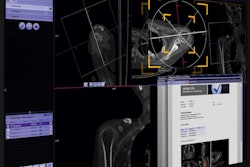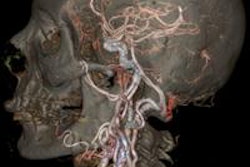Researchers from Virginia Tech Carilion Research Institute have found that ultrasound can be used to heighten sensory perception in humans.
In a study published online January 12 in Nature Neuroscience, William "Jamie" Tyler, PhD, and colleagues share details on how low-intensity, transcranial focused ultrasound could modulate human brain activity to enhance perception.
The scientists placed a small electrode on the wrist of human volunteers to stimulate the median nerve; just before stimulating the nerve, they began delivering ultrasound to the area of the cerebral cortex that processes sensory information received from the hand. They then recorded their brain responses using electroencephalography (EEG), according to a release from Virginia Tech.
Ultrasound both decreased the EEG signal and weakened the brain waves responsible for encoding tactile simulation, according to the researchers. After administering two classic neurological tests (the two-point discrimination test and frequency discrimination task), the team unexpectedly found that subjects receiving ultrasound showed significant improvements in their ability to distinguish points at closer distances and to discriminate small frequency differences between successive air puffs on the frequency discrimination task, the university said.
The researchers believe that ultrasound waveforms alter the balance of synaptic inhibition and excitation between the neighboring neurons within the cerebral cortex. This shift in balance prevents the spatial spread of excitation in response to stimuli, resulting in a functional improvement in perception, according to Virginia Tech.
Based on the findings of the current study and an earlier one, the researchers concluded that ultrasound has greater spatial resolution than two other leading noninvasive brain stimulation technologies: transcranial magnetic stimulation and transcranial direct current stimulation.



















